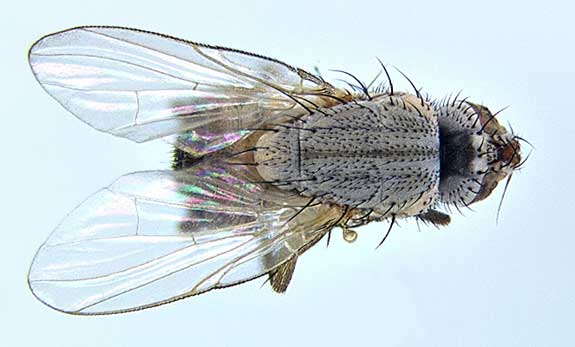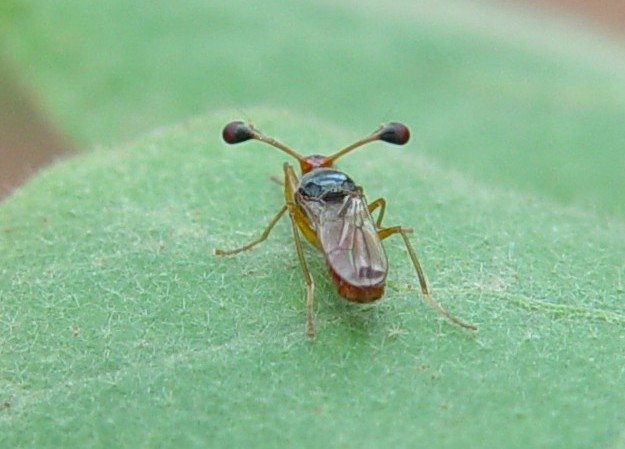(Atherigona soccata)
Credits: Biovision-Infonet

(c) Georg Goergen, Courtesy of EcoPort, www.ecoport.org

(c) A.M. Varela, icipe
Sorghum shoot fly, (Atherigona soccata), is a particularly nasty pest of sorghum in Asia, Africa, and the Mediterranean area. Females lay single cigar-shaped eggs on the undersides of leaves at the 1- to 7-leaf stage.
The eggs hatch after only a day or two of incubation, and the larvae cut the growing point of the leaf, resulting in wilting and drying. These leaves, known as ‘deadhearts’, are easily plucked. When a “dead heart” is plucked, it releases an obnoxious odor.
Adult resemble small houseflies. They are about 0.5 cm long. The shoot fly has been reported as attacking pearl millet.
Damage occurs 1-4 weeks after seedling emergence. The damaged plants produce side tillers, which may also be attacked. The shoot fly’s entire life cycle is completed in 17-21 days.
Infestations are especially high when sorghum planting is staggered due to erratic rainfall. Temperatures above 35degC and below 18degC reduce shoot fly survival, as does continuous rainfall.
What to do:
- Conserve natural enemies. Parasitic wasps and several species of spiders are important predators on eggs.
- Collect and destroy crop residues after harvest to reduce carry-over from one season to the other.
- Use shoot-fly resistant varieties, if available